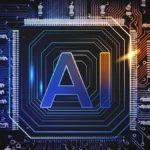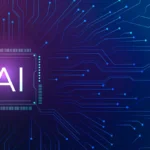Are you fascinated by the rapid advancements in artificial intelligence? Curious about how AI software is transforming industries and impacting our daily lives? If so, you’re in the right place. This article dives deep into the world of AI software, uncovering eight essential facts you need to know. Whether you’re a student, job seeker, or professional, understanding these key aspects of AI software will give you a competitive edge in the tech-driven world.
Fact 1: AI Software is Revolutionizing Industries
Artificial Intelligence (AI) software is at the forefront of innovation, driving significant changes across various industries. From healthcare to finance, and from manufacturing to education, AI is transforming how businesses operate and deliver value.
Healthcare
AI-powered software is being used to diagnose diseases, personalize treatment plans, and even predict patient outcomes. For instance, IBM Watson Health uses AI to analyze medical data and provide insights to doctors, enhancing patient care.
Finance
In the finance sector, AI algorithms are employed for fraud detection, algorithmic trading, and customer service automation. Companies like JPMorgan Chase use AI to analyze vast amounts of data and detect fraudulent activities in real time.
Manufacturing
AI software is optimizing production lines, reducing downtime, and improving quality control. Predictive maintenance systems use AI to foresee equipment failures and schedule timely repairs, thus saving costs and increasing efficiency.
Education
In education, AI is personalizing learning experiences, automating administrative tasks, and providing students with AI tutors. Platforms like Coursera and Udacity leverage AI to recommend courses and resources tailored to individual learning styles.
Table 1: AI Applications in Various Industries
| Industry | Application | Example Software |
|---|---|---|
| Healthcare | Disease diagnosis, treatment plans | IBM Watson Health |
| Finance | Fraud detection, trading | JPMorgan AI Solutions |
| Manufacturing | Predictive maintenance, quality control | Siemens MindSphere |
| Education | Personalized learning, AI tutors | Coursera AI, Udacity AI |
Fact 2: AI Software Relies on Data
Data is the lifeblood of AI software. The more data AI systems have, the better they perform. AI software uses data to learn patterns, make predictions, and improve over time.
Big Data and AI
The advent of big data has fueled the growth of AI. With the ability to process and analyze massive datasets, AI software can uncover insights that were previously unattainable. Companies like Google and Amazon harness big data to refine their AI algorithms and enhance user experiences.
Data Quality
However, the quality of data is as important as the quantity. Poor-quality data can lead to inaccurate predictions and biased outcomes. Ensuring high-quality, clean, and relevant data is crucial for the success of AI software.
Fact 3: Machine Learning is a Core Component
Machine learning (ML) is a subset of AI that focuses on developing algorithms that allow computers to learn from and make decisions based on data.
Types of Machine Learning
- Supervised Learning: Involves training the AI with labeled data. For example, an AI system trained with labeled images of cats and dogs can later identify cats and dogs in new images.
- Unsupervised Learning: The AI is given unlabeled data and must find patterns or clusters. This method is often used in customer segmentation and anomaly detection.
- Reinforcement Learning: The AI learns by interacting with its environment and receiving rewards or penalties. This technique is widely used in robotics and game playing.
Applications of Machine Learning
Machine learning is behind many AI applications, including recommendation systems (like those used by Netflix and Spotify), speech recognition (used in virtual assistants like Siri and Alexa), and autonomous vehicles.
Table 2: Types of Machine Learning and Their Applications
| Type of Learning | Description | Application Examples |
|---|---|---|
| Supervised Learning | Learning with labeled data | Image recognition, spam detection |
| Unsupervised Learning | Finding patterns in unlabeled data | Customer segmentation, anomaly detection |
| Reinforcement Learning | Learning through rewards and penalties | Robotics, autonomous driving |
Fact 4: AI Software Faces Ethical Challenges
The rise of AI software brings several ethical challenges that need to be addressed.
Bias and Fairness
AI systems can inherit biases present in the training data, leading to unfair outcomes. For example, facial recognition software has been shown to have higher error rates for people of color. Ensuring fairness and reducing bias is a critical challenge for AI developers.
Privacy Concerns
AI systems often require vast amounts of data, raising privacy concerns. The use of personal data must comply with regulations like the General Data Protection Regulation (GDPR) to protect individuals’ privacy rights.
Accountability
Determining accountability when AI systems make mistakes is another ethical dilemma. As AI becomes more autonomous, establishing clear guidelines for accountability is essential.
Fact 5: AI Software is Continuously Evolving
AI technology is constantly evolving, with new advancements and breakthroughs occurring regularly.
Deep Learning
Deep learning, a subset of machine learning, has significantly advanced the capabilities of AI. Deep learning algorithms use neural networks with many layers (hence “deep”) to analyze complex patterns in data. This technology powers applications like image and speech recognition.
Natural Language Processing (NLP)
NLP enables AI systems to understand and generate human language. Recent advancements in NLP have led to the development of powerful language models like GPT-3, which can write essays, generate code, and even engage in conversations.
Fact 6: AI Software Requires Specialized Skills
Developing and maintaining AI software requires a unique set of skills.
Key Skills for AI Professionals
- Programming: Proficiency in programming languages like Python, R, and Java is essential.
- Mathematics and Statistics: A strong foundation in mathematics, particularly in linear algebra, calculus, and statistics, is crucial for understanding and developing AI algorithms.
- Data Handling: Skills in data manipulation, analysis, and visualization are necessary to work with large datasets.
- Domain Knowledge: Understanding the specific industry where AI will be applied enhances the relevance and impact of AI solutions.
Learning Resources
There are numerous online courses, bootcamps, and certifications available to acquire these skills. Platforms like Coursera, edX, and Udacity offer comprehensive AI and machine learning programs.
Fact 7: AI Software Can Enhance Employment Opportunities
Contrary to the fear that AI will eliminate jobs, it is also creating new employment opportunities.
New Job Roles
AI is leading to the creation of new job roles such as AI specialists, data scientists, and machine learning engineers. These roles are in high demand and offer lucrative career prospects.
Upskilling and Reskilling
For existing professionals, upskilling and reskilling are essential to stay relevant in the AI-driven job market. Employers are increasingly investing in training programs to equip their workforce with AI competencies.
Table 3: AI-Related Job Roles and Skills
| Job Role | Key Skills Required | Average Salary (US) |
|---|---|---|
| AI Specialist | Machine learning, programming, data analysis | $120,000 |
| Data Scientist | Statistics, programming, data visualization | $115,000 |
| Machine Learning Engineer | Deep learning, model deployment, Python | $130,000 |
| AI Research Scientist | Research, algorithm development, Python | $140,000 |
Fact 8: AI Software is Becoming More Accessible
The democratization of AI technology means that it is becoming more accessible to individuals and businesses of all sizes.
AI Platforms and Tools
Several platforms and tools are available that simplify the development and deployment of AI solutions. Cloud-based services like Google Cloud AI, Amazon Web Services (AWS) AI, and Microsoft Azure AI provide scalable and cost-effective AI capabilities.
Open-Source AI
Open-source AI frameworks like TensorFlow, PyTorch, and Keras have lowered the barrier to entry for AI development. These frameworks provide pre-built models and tools that enable developers to experiment and build AI solutions without starting from scratch.
Online Learning and Communities
The availability of online learning resources and active AI communities fosters knowledge sharing and collaboration. Websites like GitHub host numerous AI projects, while forums like Stack Overflow provide a platform for asking questions and getting help from experts.
READ MORE : 8 Free AI Software for Beginners
Conclusion
Artificial intelligence software is reshaping our world, offering unprecedented opportunities and posing new challenges. Understanding the facts about AI software is crucial for anyone looking to navigate this dynamic field.
Thank you for taking the time to read this comprehensive article. Stay connected with Artificial Intelligence Topics through our social media channels, push notifications, and newsletters to get the latest updates and insights on AI. Join our community and be part of the AI revolution.


















